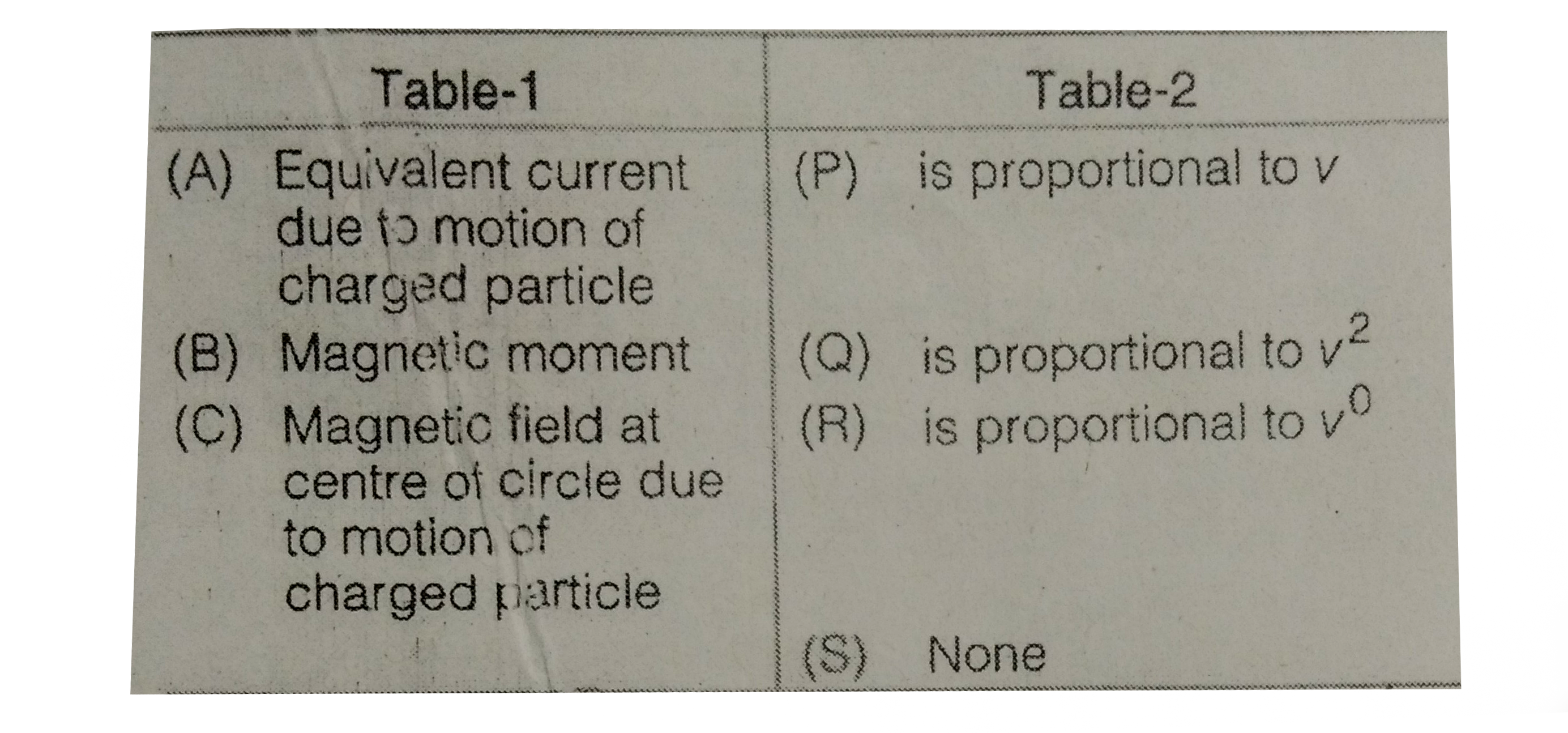A charged particle is moving in a uniform magnetic field and losses 4% of its KE. The radius of curvature of its path change by
0.02
0.04
0.1
None of these
The correct Answer is:a
To solve the problem of how the radius of curvature of a charged particle's path changes when it loses 4% of its kinetic energy in a uniform magnetic field, we can follow these steps:
1. Understand the relationship between kinetic energy and radius of curvature:
The radius of curvature R of a charged particle moving in a magnetic field is given by the formula:
R=mvqB
where:
- m is the mass of the particle,
- v is the velocity of the particle,
- q is the charge of the particle,
- B is the magnetic field strength.
The kinetic energy KE of the particle is given by:
KE=12mv2
2. Determine the initial kinetic energy:
Let the initial kinetic energy be K. Thus, we have:
KE=K=12mv2
3. Calculate the new kinetic energy after losing 4%:
After losing 4% of its kinetic energy, the remaining kinetic energy K′ is:
K′=K−0.04K=0.96K
4. Relate the new kinetic energy to the new velocity:
The new kinetic energy can also be expressed in terms of the new velocity v′:
K′=12mv′2=0.96K
5. Express the initial and new velocities:
From the kinetic energy equations, we can express the velocities:
v=√2Kmandv′=√2K′m=√2×0.96Km=√0.96⋅√2Km=√0.96⋅v
6. Find the initial and new radius of curvature:
The initial radius of curvature R1 is:
R1=mvqB
The new radius of curvature R2 is:
R2=mv′qB=m(√0.96⋅v)qB=√0.96⋅R1
7. Calculate the change in radius:
The change in radius can be expressed as:
Change in radius=R1−R2=R1−√0.96⋅R1=R1(1−√0.96)
8. Calculate the percentage change in radius:
The percentage change in radius is given by:
Percentage change=R1−R2R1×100=(1−√0.96)×100
9. Compute the numerical value:
First, calculate √0.96:
√0.96≈0.98
Thus, the percentage change becomes:
Percentage change≈(1−0.98)×100=0.02×100=2%
Final Answer:
The radius of curvature changes by approximately 2%.
---
The radius of curvature R of a charged particle moving in a magnetic field is given by the formula:
R=mvqB
where:
- m is the mass of the particle,
- v is the velocity of the particle,
- q is the charge of the particle,
- B is the magnetic field strength.
KE=12mv2
Let the initial kinetic energy be K. Thus, we have:
KE=K=12mv2
After losing 4% of its kinetic energy, the remaining kinetic energy K′ is:
K′=K−0.04K=0.96K
The new kinetic energy can also be expressed in terms of the new velocity v′:
K′=12mv′2=0.96K
From the kinetic energy equations, we can express the velocities:
v=√2Kmandv′=√2K′m=√2×0.96Km=√0.96⋅√2Km=√0.96⋅v
The initial radius of curvature R1 is:
R1=mvqB
The new radius of curvature R2 is:
R2=mv′qB=m(√0.96⋅v)qB=√0.96⋅R1
The change in radius can be expressed as:
Change in radius=R1−R2=R1−√0.96⋅R1=R1(1−√0.96)
The percentage change in radius is given by:
Percentage change=R1−R2R1×100=(1−√0.96)×100
First, calculate √0.96:
√0.96≈0.98
Thus, the percentage change becomes:
Percentage change≈(1−0.98)×100=0.02×100=2%
The radius of curvature changes by approximately 2%.
Topper's Solved these Questions
Similar Questions
Knowledge Check
- Question 1 - Select One
A particle is moving in a uniform magnetic field, then
AIts momentum changes but total energy remains the sameBBoth momentum and total energy remain the sameCBoth will changeDTotal energy changes but momentum remains the same - Question 2 - Select One
A charged particle is moving in a uniform magnetic field and losses 4% of its KE. The radius of curvature of its path change by
A2%B4%C10%D12% - Question 3 - Select One
A charged particle moves in a uniform magnetic field perpendicular to it, with a radius of curvature 4 cm. On passing through a metallic sheet it loses half of its kinetic energy. Then, the radius of curvature of the particle is
A2cmB4cmC8cmD2√2cm
The path of a charged particle moving in a uniform steady magnetic field cannot be a
View SolutionA charged particle is moving in a uniform magnetic field in a circular path. Radius of circular path is R. When energy of particle is doubled, then new radius will be
View SolutionA charge particle is moving in a plane perpendicular to uniform magnetic field, then
View SolutionA particle moving in a magnetic field increases its velocity, then its radius of the circle
View SolutionA charged particle moving at right angles to a uniform magnetic field and starts moving along a circular arc of radius of curvature 'r' . In the field it now penetrates a layer of lead and loses 3/4 of its initial kinetic energy. The radius of curvature of its path now will be
View Solution


